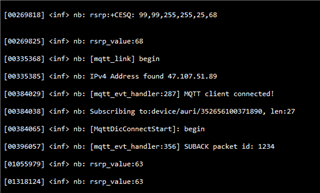When we develop out product, we found it cannot connect to our server. After our check step by step, we found if we comment the code about RAI setting, MQTT service can be used. When we set "AT%XRAI=4", MQTT will return an error. The error code is -116. Is there any conflict between them?




